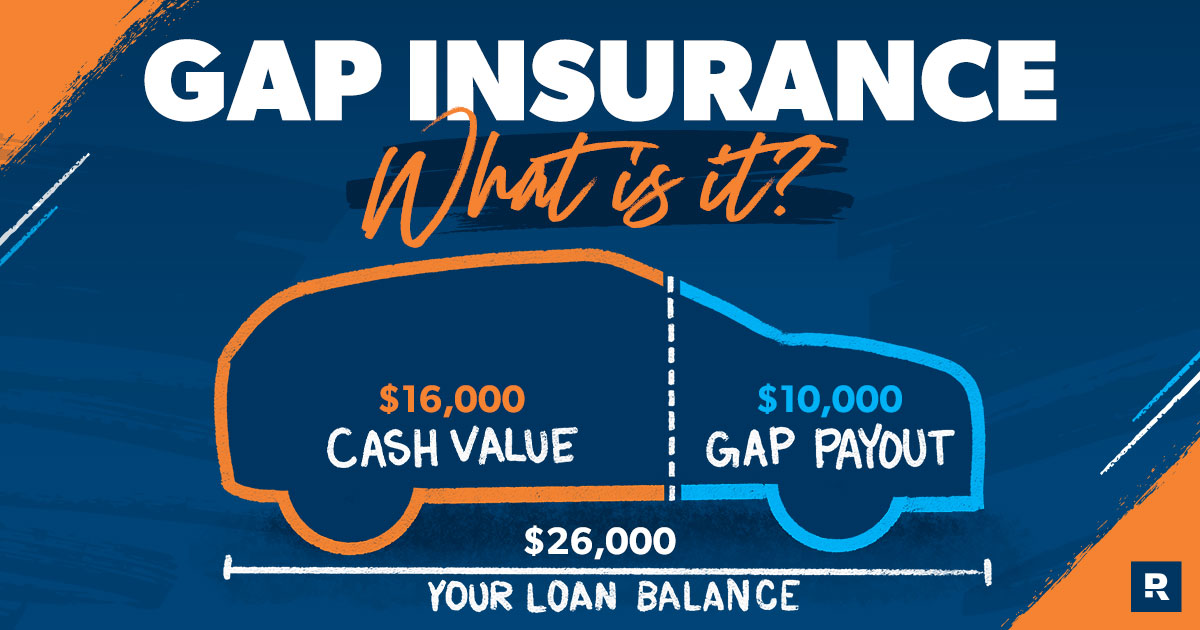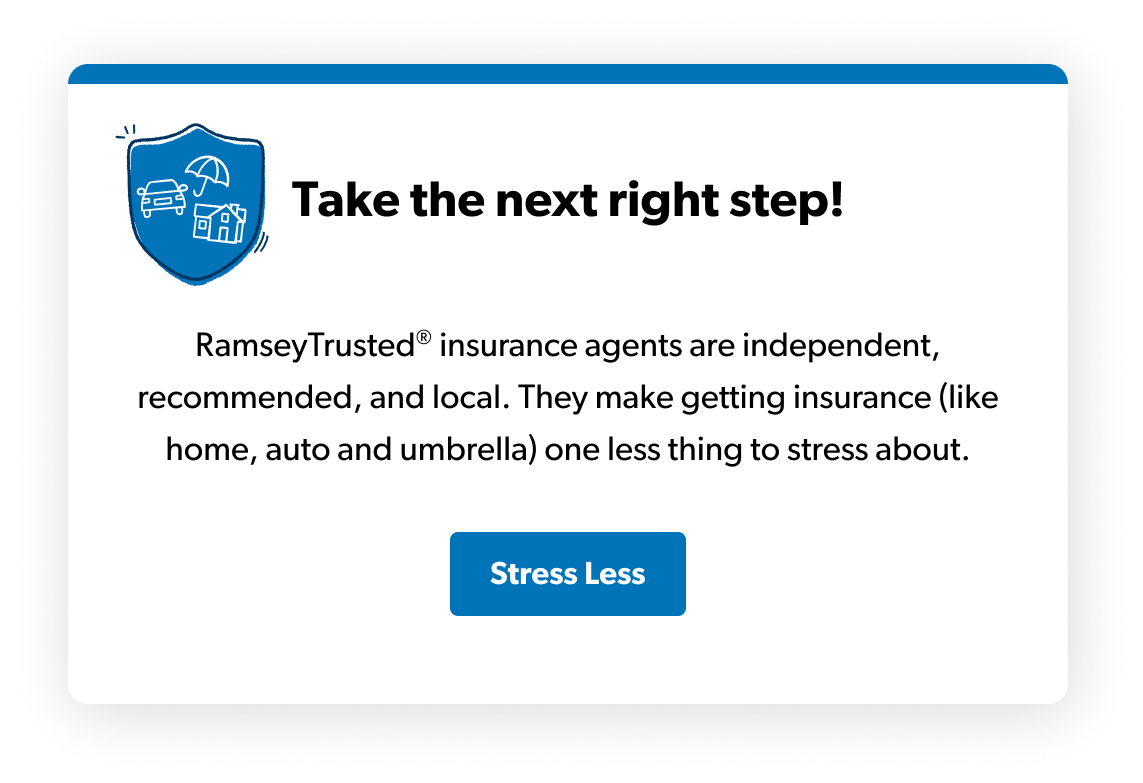
Key Takeaways
- Guaranteed asset protection (GAP) insurance covers the difference between your car’s actual cash value and the remaining balance on your loan or lease if your vehicle is totaled or stolen.
- GAP insurance is beneficial if you made a low down payment (20% or less), have a long loan term (60 months or more), or are leasing a car—as these situations increase the likelihood of owing more than the car is worth.
- On the flip side, if you made a high down payment (more than 20%), have a short loan term (less than 60 months), or financed a low-priced car, GAP insurance may not be necessary—since the loan balance is less likely to exceed the car’s value.
Once you know what GAP insurance for cars is, its name seems logical. It fills the gap between your car loan balance and your car’s resale value if it gets totaled or stolen. The name fits, right?
Well, kind of. It’s actually an acronym for guaranteed asset protection, but it’s also used to indicate there’s a financial hole that needs to be filled.
Keep reading to learn more.
- What Is GAP Insurance?
- How Does GAP Insurance Work?
- Why Do I Need GAP Insurance?
- What Does GAP Insurance Cover?
- How Much Does GAP Insurance Cost?
- Is GAP Insurance Worth It?
- GAP Insurance FAQs
What Is GAP Insurance?
GAP insurance for cars covers the difference between the value of your car and the amount you still owe on the car if it’s financed or leased and gets totaled or stolen. In other words, if your vehicle is totaled or stolen before your loan or lease is paid off, GAP insurance covers the difference between what your car is worth and the amount you still owe.
Full disclosure here before we continue: We hate debt. We do not recommend car loans. We’ll always tell you to buy your car with cash because, truthfully, financing a car means your car isn’t even yours!
But if your sanity temporarily goes AWOL and you take out a car loan (gasp!), GAP insurance can be a smart way to protect your money. Just remember, never buy coverage from a car dealership—it’ll be much cheaper buying it through your insurance company.
How Does GAP Insurance Work?
The first thing to know about GAP insurance is that it works together with collision and comprehensive insurance. You must have collision and comprehensive insurance on your policy in addition to GAP insurance. This is because GAP insurance supplements the payout from collision and comprehensive.
Keep in mind, GAP insurance is only necessary if you have a loan or lease balance on your car. In fact, car dealerships and auto finance companies sometimes include it in your financing automatically—or at least strongly recommend it—especially if you’re buying a new car with little or no down payment.
If you total your car but still owe on the loan, GAP insurance covers the difference—so you’re not stuck making payments on a car you can no longer drive.
Why Do I Need GAP Insurance?
GAP insurance can offer an enormous amount of financial protection (and precious peace of mind) for car loans and leases, but only in certain situations. Let’s talk about when it’s useful and when you don’t really need it.
In all cases, the key factor for deciding if GAP insurance is worth it is whether you’re upside-down on your loan. An upside-down car loan means that the amount you owe is greater than the value of your car.
So, for low down payments (less than 20%) and long-term loans (60 months or more), you will most likely be upside-down for the first few years of the loan until you can shrink your debt and expand your ownership. For those first few years, GAP insurance can be helpful.
On the flip side, the most common reason for skipping GAP insurance is if the difference between your car loan balance and your car’s actual cash value (ACV) isn’t big enough to justify buying GAP insurance.
|
GAP Insurance Is Necessary |
GAP Insurance Isn’t Necessary |
|
Low down payment: If your down payment is 20% or less, you need GAP insurance until you decrease your loan balance. |
High down payment: If your down payment is 20% or more, your loan balance might not be high enough to justify GAP insurance. |
|
Long loan length: If the length of your loan is 60 months or longer, you need GAP insurance until you decrease your loan balance. |
Short loan length: If the length of your loan is less than 60 months, your loan balance likely won’t exceed your car’s value for long—so GAP coverage may not be needed. |
|
Car lease: Most car dealers require that you buy GAP insurance (in addition to collision and comprehensive coverage) before you lease a car. |
Low-priced car: If you finance a low-priced car, the difference between your loan balance and your car’s worth most likely won’t justify GAP insurance. |
What Does GAP Insurance Cover?
The most common GAP insurance question we hear is, “Does it cover cars that are stolen?” The answer is yes, but only if you have comprehensive insurance. (There’s always a catch, right?)
If you have comprehensive coverage on a financed car (most lenders require it), your insurance provider will pay out the ACV of the car that was stolen, and your GAP insurance will cover the difference between the comprehensive coverage payout and your loan balance.
And it's the same deal if your car is totaled—your GAP insurance will cover the rest of your loan balance after the collision coverage payout.
We’ve just hit on the basics here. Learning more about what GAP insurance does and doesn’t cover is a smart way to protect yourself from an unexpected financial disaster.
How Much Does GAP Insurance Cost?
Now, for the good news. GAP insurance is relatively cheap.
Typically, you’ll get a much better deal buying it through your insurance company than from the dealership. Car dealers may push hard to sell you GAP coverage—and even offer to roll it into your loan. Don’t fall for it! That’s a double no-no. You don’t need a car loan, and dealerships often overcharge for GAP insurance.
A reputable car insurer will generally only charge 5–6% of the price of your annual collision and comprehensive premium.1 So, if you pay $1,000 a year for those two coverages, you’d pay $50–60 extra per year for GAP insurance.
Some insurance providers charge as little as $20 a year for GAP insurance with collision and comprehensive.2 That said, your cost will vary according to your state, age, driving record and model of car.
It’s best to shop around. But instead of doing the legwork yourself, we recommend connecting with one of our RamseyTrusted® insurance agents who can find GAP insurance at the best price for you.
Is GAP Insurance Worth It?
The best way to decide if GAP insurance is worth the monthly payment is to think about these three things: how much you owe on your car loan, how much your car is worth, and how much cash you have.
If your car loan balance is higher than your car’s value, you’re upside-down on your loan, and GAP insurance is worth it. Kelley Blue Book is a good resource for finding the value of your car.
For example, let’s say you owe $17,000 on your loan, and your car is worth $12,000. You’re upside-down on your loan because your loan balance is higher than the value of your car. GAP insurance is worth it in this case because if your car is totaled or stolen, you’d be on the hook for $5,000 ($17,000 minus $12,000) to pay off your loan balance.
Also, think about whether you have enough cash to afford the out-of-pocket expenses. If you have enough cash to cover the difference between your loan balance and your ACV payout, GAP insurance won’t be worth it for you.
GAP Insurance FAQs
Still got questions about GAP insurance? We get that! (It’s kind of a complex topic.) We collected answers to the most common questions about GAP insurance.
1. Can you get GAP insurance after you buy a car?
Yes, you can. Insurance agents can add GAP insurance to your policy after your car purchase or lease.
2. Do you need GAP insurance if you already have full coverage?
Assuming you took out a loan to buy your car (ugh!), you need GAP insurance. Even if you have collision and comprehensive coverage (sometimes called full coverage), those coverages only pay up to your car’s current market value—not what you still owe on the loan.
Especially during the first few years of your auto loan, while your car’s value is depreciating faster than your loan balance is shrinking, GAP insurance is very helpful.
3. Can I get a GAP insurance refund?
If you pay off your car loan early, sell or trade your car, or switch insurance companies, you won’t get a full refund on your GAP insurance policy, but you can get a portion back. Just keep in mind, you can’t get a refund simply because you never used the coverage or filed a claim.
4. How long should I keep my GAP insurance?
The best time to cancel your GAP insurance is when your loan amount drops below your car’s value. Keep in mind, though, that when GAP insurance is required by a lease or loan, there’s usually a condition for cancellation. Read your contract to find out when you’re legally allowed to cancel your GAP insurance.
Also, if you’re cancelling your GAP insurance because you’re selling or trading your car, make sure you wait until after the transaction is complete.
5. How do I get GAP insurance?
GAP insurance is easier and cheaper to get through a car insurance agent compared to a dealership.
Find the Best GAP Insurance at the Cheapest Price
Wondering where you can get car GAP insurance for a good price? Typically, insurance agents offer it at a significantly lower price than car dealers.
We recommend getting in touch with one of our RamseyTrusted agents. Because they’re independent (not tied to a single agency) they can shop around to find you the best coverage at the best price. It also means they can give you an honest answer about whether or not you need GAP insurance. If you do, they can take the time needed to explain your options.
Connect with a RamseyTrusted pro today!
Next Steps
- Find out if you’re upside-down on your loan by comparing your loan balance to your car’s current value—if you owe more, you may need GAP insurance.
- Review your insurance policy to see if GAP insurance is already included.
- Connect with a RamseyTrusted agent who can help you get the right coverage at the best price.



